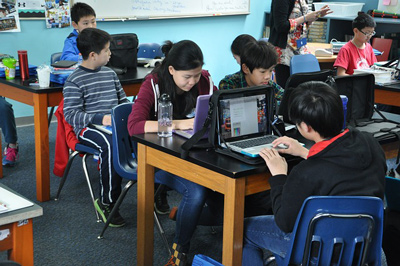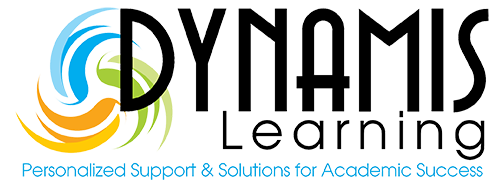 What is artificial intelligence? How can I enhance my child’s learning while at the same time protecting them in a 21st-century, technological world?
What is artificial intelligence? How can I enhance my child’s learning while at the same time protecting them in a 21st-century, technological world?
In today’s twenty-first century world, we seem to be surrounded by technology. From spell check and autocorrect to text-to-speech and Siri, we tend to rely on the devices most often found within the palm of our hand for everyday tasks. We have harnessed the unique capabilities of the technology at our fingertips – and in recent years – so have children in K-12 classrooms. If you have ever heard of the term ChatGPT, for instance, then you are familiar with artificial intelligence.
Over the last few decades, with so many advancements in technology, the term “artificial intelligence” has gained more and more popularity. Most recently, the term has found its way into the field of education and K-12 classrooms, which begs the question – what is artificial intelligence?
 According to the Cambridge Dictionary, artificial intelligence (AI) is “the use of computer programs that have some of the qualities of the human mind, such as the ability to understand language, recognize pictures, and learn from experience.” Essentially, artificial intelligence aims to equip technological devices like computers with human capabilities.
According to the Cambridge Dictionary, artificial intelligence (AI) is “the use of computer programs that have some of the qualities of the human mind, such as the ability to understand language, recognize pictures, and learn from experience.” Essentially, artificial intelligence aims to equip technological devices like computers with human capabilities.
Originating in the 1940s and 1950s with the advent of computers, artificial intelligence continues to improve and expand as computers are created to store increasing amounts of information. Just think about any time an automated voice answers your call or a car advertises “driverless” technology! AI technology has made strides over the last several years and will continue to be part of our modern world – now making its presence known in our children’s classrooms (Rockwell Anyoha, “The History of Artificial Intelligence,” Harvard University).
 When we hear the word, “artificial,” we tend to think of words like “unnatural” or “fake.” On the other hand, when we hear the word, “intelligence,” we tend to think of words like “reason” and “wisdom.” How does artificial intelligence – this apparent paradox – bridge the gap between these two seemingly contradictory terms?
When we hear the word, “artificial,” we tend to think of words like “unnatural” or “fake.” On the other hand, when we hear the word, “intelligence,” we tend to think of words like “reason” and “wisdom.” How does artificial intelligence – this apparent paradox – bridge the gap between these two seemingly contradictory terms?
As with any technological tool, there is always the potential for benefits and challenges, and this reality is not forgotten in the twenty-first century classroom. As parents and teachers, it is our responsibility to teach our children and students how to use technology positively and for the good of themselves and others, especially when benefiting their education.

Stay tuned for our next blog posts in this series regarding the myths around artificial intelligence and pros and cons of AI technology, including more specific details about resources, like ChatGPT, that your child or student may be using in the classroom.
We, at Dynamis Learning, believe in helping parents support their children in their education, especially in a twenty-first century world that is constantly evolving with new technology tools. We work in collaboration with your child’s teacher and school to find out what the teacher sees in the classroom versus what the parent sees at home.
Contact owner, Helen Panos, at info@dynamislearningacademy.com or at 770-282-9931 to schedule a free consultation about K-12 tutoring, test taking tips, SAT/ACT Prep, online writing workshops, advocacy, academic planning, or any other area of concern.

What is artificial intelligence? How can I enhance my child’s learning while at the same time protecting them in a 21st-century, technological world?
In today’s twenty-first century world, we seem to be surrounded by technology. From spell check and autocorrect to text-to-speech and Siri, we tend to rely on the devices most often found within the palm of our hand for everyday tasks. We have harnessed the unique capabilities of the technology at our fingertips – and in recent years – so have children in K-12 classrooms. If you have ever heard of the term ChatGPT, for instance, then you are familiar with artificial intelligence.
Over the last few decades, with so many advancements in technology, the term “artificial intelligence” has gained more and more popularity. Most recently, the term has found its way into the field of education and K-12 classrooms, which begs the question – what is artificial intelligence?

According to the Cambridge Dictionary, artificial intelligence (AI) is “the use of computer programs that have some of the qualities of the human mind, such as the ability to understand language, recognize pictures, and learn from experience.” Essentially, artificial intelligence aims to equip technological devices like computers with human capabilities.
Originating in the 1940s and 1950s with the advent of computers, artificial intelligence continues to improve and expand as computers are created to store increasing amounts of information. Just think about any time an automated voice answers your call or a car advertises “driverless” technology! AI technology has made strides over the last several years and will continue to be part of our modern world – now making its presence known in our children’s classrooms (Rockwell Anyoha, “The History of Artificial Intelligence,” Harvard University).

When we hear the word, “artificial,” we tend to think of words like “unnatural” or “fake.” On the other hand, when we hear the word, “intelligence,” we tend to think of words like “reason” and “wisdom.” How does artificial intelligence – this apparent paradox – bridge the gap between these two seemingly contradictory terms?
As with any technological tool, there is always the potential for benefits and challenges, and this reality is not forgotten in the twenty-first century classroom. As parents and teachers, it is our responsibility to teach our children and students how to use technology positively and for the good of themselves and others, especially when benefiting their education.

Stay tuned for our next blog posts in this series regarding the myths around artificial intelligence and pros and cons of AI technology, including more specific details about resources, like ChatGPT, that your child or student may be using in the classroom.
We, at Dynamis Learning, believe in helping parents support their children in their education, especially in a twenty-first century world that is constantly evolving with new technology tools. We work in collaboration with your child’s teacher and school to find out what the teacher sees in the classroom versus what the parent sees at home.
Contact owner, Helen Panos, at info@dynamislearningacademy.com or at 770-282-9931 to schedule a free consultation about K-12 tutoring, test taking tips, SAT/ACT Prep, online writing workshops, advocacy, academic planning, or any other area of concern.
